The Pickup
Created initially as a purely utilitarian vehicle, the pickup has evolved many times over the past 100 years. In the future, an element of electricity could be added if Tesla’s concept goes into production. With the pickup of the future not so distant anymore, pickup enthusiasts have much to be excited about. However, the pickup, long an American and Australian icon (in the form of a “ute”) and a dependable load-carrying force in Europe, will continue for the foreseeable future albeit with production moved away from European factories.
What is a pickup?
A pickup truck or pickup is a light truck with an enclosed cab and an open cargo area with low sides and tailgate. In Australia and New Zealand, both pickups and coupé utilities are called “utes”, an abbreviation for a utility vehicle. With the development of the pickup, there has been the inclusion of several different cab types allowing additional occupants in varying degrees of comfort. It is the double cab that effectively combines SUV space in the cab with a large open cargo area. It is this body style that has become very popular, especially in the UK where double-cab pickups with payloads over a tonne are assessed as light commercial vehicles (LCV) for benefit in kind taxation. This tax advantage continues to make these vehicles attractive for company car drivers creating high levels demand for special edition pickups such as the Volkswagen Amarok Dark Label and the Arctic Truck series.
The demise of 4×4 Pickup Production in Europe
The announcement that Nissan is to close their Barcelona production facility by the end of 2020, arrives with plans to relocate production of the Navara pickup to South Africa, while, according to reports, a replacement for the e-NV200 van, also built at the Barcelona factory, would be built at Renault’s plant in Maubeuge, France. Glass’s Chief Commercial Vehicle Editor, Andy Picton, takes a closer look at the history of the 4×4 pickup and how production has slowly moved away from Europe.
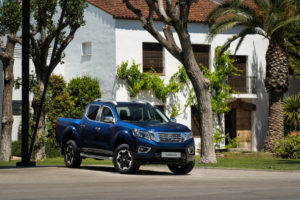
History
Pickups have been available since the early 1900s. Most were constructed by third parties by adding pickup style bodies to manufacturer-supplied chassis. However, it was the Second World War that became the catalyst for the development of the pickup. The roots of mass-produced four-wheel-drive pickup vehicles can be traced to this period with the Willys CJ-2A Jeep, followed by the Ford F-Series and the Land Rover Series I in 1948.
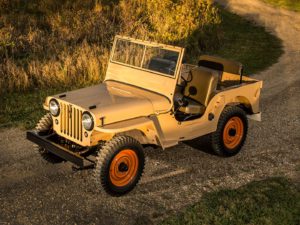
However, it was with the launch of the Dodge Power Wagon at the end of the Second World War that the pickup became recognisable to today’s customers with fixed body-coloured side panels. This was the first model where the body style had an integrated appearance.
The appeal of the pickup grew in the 1950s with Chevrolet, GMC, International, Studebaker, Toyota and Hino all launching models in the USA. Foreign competition in the American pickup market effectively stopped in 1963 with the implementation of the ‘Chicken Tax’ in 1963 which directly penalised any country importing light trucks into the USA.
Ten years later, the federal government in the USA introduced the Corporate Average Fuel Economy (CAFE). This policy was designed specifically to improve the fuel economy of cars. Unhindered by the new stringent CAFE controls, pickups started to take the place of muscle cars as the performance vehicle of the time. In 1978, the introduction of the ‘Gas Guzzler Tax’ in the USA again targeted inefficient cars, whilst again exempting pickups.
A further advantage in their production at this time was that pickups were not required to meet the same safety standards as cars until 1999. These rules distorted the American market in favour of the pickup.
During the 1980s compact pickups from Mazda, Mitsubishi and Isuzu went on sale in the USA prompting Ford to launch the Ranger and Chevrolet to launch the S-10 as compact rivals. It was also during this time that pickup sales took off in other international markets such as Australia, South Africa and Asia.
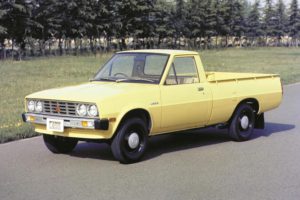
In Europe, the introduction of the pickup was a much slower burn. Early examples were two-wheel-drive car conversions such as the Citroen 2CV pickup, Morris Minor pickup and Fiat Musone pickup. These were followed by the Yugoslavian built Volkswagen Caddy, the Peugeot 504 pickup produced in France and the Ford P100 assembled in Portugal. It was during the Eighties when Asian manufacturers including Mitsubishi, Isuzu, Nissan and Toyota, along with Ford began to launch dedicated 4×4 pickups in Europe.

For a short period, the Isuzu KB (Isuzu Faster/Chevrolet LUV/Bedford KB in other world markets) and the Mitsubishi L200 were assembled in Europe.
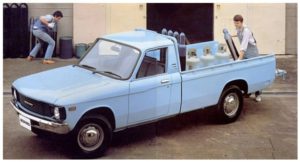
Additionally, Volkswagen’s second tentative step in producing pickups took the form of the Taro. This was a joint venture with Toyota where Volkswagen built rebadged versions of the Toyota Hilux in Hannover from 1989. Only the 4×2 single cab variant was assembled there, with the Joint Venture ending in 1997 due to low sales volumes.
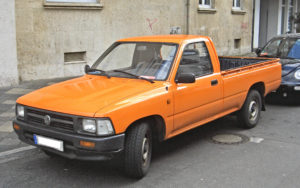
From 1997, Nissan was the only mainstream manufacturer assembling 4×4 pickups in Europe. Their Barcelona plant in Spain assembled the D22 Series and continues to this day with the current Navara range. From 2016, the plant also builds re-engineered versions of the Alaskan for Alliance partner Renault and from 2017 and the Mercedes-Benz X-Class.
In 2012 European production of the Volkswagen Amarok was transferred from the Pacheco plant in Argentina to Hannover in Germany, sharing the facility with the Transporter van.
Ceasing European production
Volkswagen have announced that production of the current Amarok will cease completely at their Hannover plant by May 2020. Sifting through the news stories, many articles suggest that Ford and Volkswagen will co-develop a replacement for the Amarok pick-up truck. The details are currently sketchy, however, it appears that Ford’s mid-size Ranger pickup will form the basis of any future platform cooperation on pickups, helping Volkswagen reduce the costs associated with designing a replacement for the Amarok. Analysts suggest the partnership could create a production model with an on sale in 2022.

Volkswagen will stop selling the Amarok in the UK on the 31st August 2020, just before new emissions regulations come into force in September, obliging LCV manufacturers to lower the average CO2 emissions of their vehicle ranges to below 147g/km. The Amarok’s powerful V6 engine pushes its CO2 to 213g/km in its cleanest guise, lifting Volkswagen’s average significantly.
Production of the next-generation Amarok is thought to be moving to Ford’s Silverton facility near Pretoria, South Africa, with the spare factory capacity at Hannover potentially given over to new electric ranges due for future launches.
Early in 2020, Mercedes-Benz announced the demise of the X-Class pickup connected to the unavailability of Euro 6d-Temp engines. Production of the X-Class pickup at the Nissan factory in Barcelona ceased at the end of May, with the last units for the UK registered by 31st August 2020.
This brings the story up to date, with the announcement in May that Nissan will be closing the Barcelona factory. The production of the Navara will move to Nissan’s newly renovated facilities in Roslyn, near Pretoria in South Africa by the end of 2020. From a business perspective, this decision was made easier by the reduced volume produced in Barcelona of only 53,000 vehicles in 2019, around 25% of the factory capacity of 200,000.
Pickup Production
| Model | Current Production | Future Production |
|---|---|---|
| Ford Ranger | Silverton, South Africa | Silverton, South Africa |
| Great Wall | Boading, China | Boading, China |
| Isuzu D-Max | Phrapradaeng, Thailand | Phrapradaeng, Thailand |
| Mercesdes-Benz X-Class | Barcelona, Spain | – |
| Mitsubishi L200 | Laem Chabang, Thailand | Laem Chabang, Thailand |
| Nissan Navara | Barcelona, Spain | Rosslyn, South Africa |
| Renault Alaskan | Barcelona, Spain | Rosslyn, South Africa |
| SsangYong Musso | Pveontaek, South Korea | Pveontaek, South Korea |
| Toyota Hilux | Prospecton, South Africa | Prospecton, South Africa |
| Volkswagen Amarok | Hannover, Germany | Silverton, South Africa |
The future of pickups
In an age of alliances and technology sharing, the pickup is leading the industry in how this can be achieved. However, with that sharing and the search for cost-saving has come a time where pickups are no longer built in Europe. With the closure of Nissan’s Barcelona plant, and Volkswagen’s relocation of Amarok production outside Europe, it means that no pickups will be built in Europe by the end of 2020. Although not currently a trend across all LCVs, the Glass’s commercial editorial team will continue to monitor the production of other segment contenders and understand where the next production trends will surface.



 Close
Close